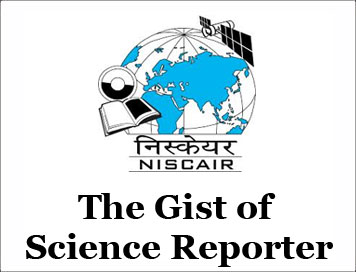(FREE) UPSC Current Affairs 2025 PDF
NEW! The Gist (JUN-2025) | E-BOOKS
(GIST OF SCIENCE REPORTER) GAGANYAN MISSION
(GIST OF SCIENCE REPORTER) GAGANYAN MISSION
(JANUARY-2025)
GAGANYAN MISSION
Indian Space Research Organisation (ISRO) and Australian Space Agency (ASA) have signed an Implementation Agreement (IA) for further strengthening cooperation in space activities.
Key highlights:
-
The IA, which enables cooperation between both space agencies on crew and crew module recovery for Gaganyaan missions, was signed between the two space agencies on November 20.
-
The IA enables the Australian authorities to work with Indian authorities to ensure support for search and rescue of crew and recovery of crew module as part of contingency planning for ascent phase aborts near Australian waters.
About Gaganyan Mission
-
Gaganyaan project envisages demonstration of human spaceflight capability by launching a crew of 3 members to an orbit of 400 km for a 3 days mission and bring them back safely to earth, by landing in Indian sea waters.
-
Critical technologies: The pre-requisites for Gaganyaan mission include development of many critical technologies including Human-Rated Launch Vehicle for carrying crew safely to space, Life Support System to provide an earth like environment to crew in space, crew emergency escape provision and evolving crew management aspects for training, recovery and rehabilitation of crew.
Demonstrator missions:
-
Various precursor missions are planned for demonstrating the Technology Preparedness Levels before carrying out the actual Human Space Flight mission.
-
These demonstrator missions include Integrated Air Drop Test (IADT), Pad Abort Test (PAT) and Test Vehicle (TV) flights. Safety and reliability of all systems will be proven in unmanned missions preceding manned missions.
-
Launch vehicle: Human rated LVM3 - HLVM3, was previously known as the Geosynchronous Satellite Launch Vehicle Mark III, - is identified as the launch vehicle for Gaganyaan mission.
Significance of Gaganyan Mission
Fostering Innovation and Growth:
-
The Gaganyaan mission will serve as a breeding ground for innovation, inspiring a new generation of scientists, engineers and entrepreneurs. The development of cutting-edge technologies, from advanced life support systems to sophisticated navigation systems, will push the boundaries of Indian ingenuity.
Employment Creation and Private Sector Growth:
-
The mission will create a ripple effect in the job market, generating employment opportunities for thousands of skilled professionals. With the majority of components and technology being developed indigenously, the private sector will play a pivotal role, leading to its growth and expansion.
Human Beneficial Technology:
-
The technologies developed for the Gaganyaan mission hold immense potential for societal betterment. Advanced life support systems can be adapted for use in disaster relief efforts, while water purification systems developed for the mission can provide clean drinking water to remote areas.
International Collaboration and Partnerships:
-
The Gaganyaan mission will pave the way for future international collaborations in space exploration. India’s technological prowess will attract partnerships with other space agencies, leading to joint ventures and knowledge sharing.
- Interdisciplinary Collaboration and Academia-Industry
Partnerships:
The mission will foster collaboration between various disciplines, laboratories, industries, and government agencies. This interdisciplinary approach will break down silos and lead to the development of innovative solutions.
Challenges
-
Human Survival Technologies: Developing the necessary technologies for human survival in space is a complex and time-consuming process. ISRO is actively working on creating advanced life support systems, radiation shielding, and waste management solutions.
-
Human Training: While India lacks dedicated astronaut training facilities, ISRO has partnered with international agencies to provide comprehensive training to the Gaganyaan crew. As the program progresses, India will strive to develop its own state-of-the-art training facilities.
-
Cost-Effectiveness: Balancing cost-effectiveness with technological advancement is a critical aspect of the mission. ISRO is using innovative design and manufacturing techniques to develop reliable and affordable technologies.
-
Human Safety: Ensuring the safe return of astronauts is paramount. ISRO is implementing stringent safety protocols and developing robust emergency response systems.
Way Forward
-
Precautionary approach: ISRO will take all precautions by carrying out a sufficient number of tests before the manned Gaganyaan mission is launched.
- Gaganyaan as Stepping Stone: The ultimate vision is building a space station by 2035 and having an Indian person land on the moon by 2040.
CLICK HERE TO DOWNLOAD FULL PDF
CLICK HERE TO DOWNLOAD UPSC E-BOOKS
Study Material for UPSC General Studies Pre Cum Mains
Get The Gist 1 Year Subscription Online
Click Here to Download More Free Sample Material
<<Go Back To Main Page
Courtesy: Science Reporter



